
Roots
For those of us whose lineage carries the whispers of coiled strands and vibrant crowns, the relationship with textured hair extends far beyond simple aesthetics. It is a dialogue with ancestry, a living scroll etched with the resilience of generations. The very structure of textured hair, its spirals and bends, carries the echo of ancient lands, serving as a silent, yet powerful, testament to identity and belonging. We stand now at a point in time where the meanings held within each curl and kink are widely acknowledged, yet the depths of this connection, its genesis in biological distinctiveness and the wisdom of bygone practices, remain an ever-unfolding story.

Ancestral Structures and Modern Understanding
The inherent architecture of textured hair, from the tightest curl to the gentlest wave, stands apart in its biological design. Unlike straight hair, which tends to grow in a round cross-section from a straight follicle, coiled and curly strands spring from an elliptical follicle, curving as they grow. This unique shaping affects how moisture travels along the hair shaft and how light reflects, producing the rich variation in luster and bounce we observe. Ancient communities understood these properties intuitively, long before microscopes revealed cellular structures.
They recognized how certain environments and specific care rituals influenced the vitality of these hair patterns. The recognition of these distinctions, even without scientific labels, formed the bedrock of care traditions passed down through familial lines.
The earliest peoples knew their hair not just as an outgrowth of their bodies, but as a living canvas, a spiritual antenna, a marker of one’s place in the cosmic order. Hair, situated atop the head, was often regarded as the closest connection to the divine, a conduit for spiritual energy. This sacred view informed daily grooming as a ritual of reverence, not mere vanity. The practices of washing with natural clays and plant infusions, adorning with beads and shells, and sculpting hair into intricate forms were acts imbued with meaning.
Each twist, each braid, each knot carried a message, a silent language spoken through visual declaration. These ancestral ways remind us that hair science, in its truest sense, began not in laboratories, but within the communal spaces where wisdom was exchanged and care was a collective art.
Textured hair’s biological design, originating from unique follicle shapes, underpinned ancient communal wisdom about its care and symbolic power.
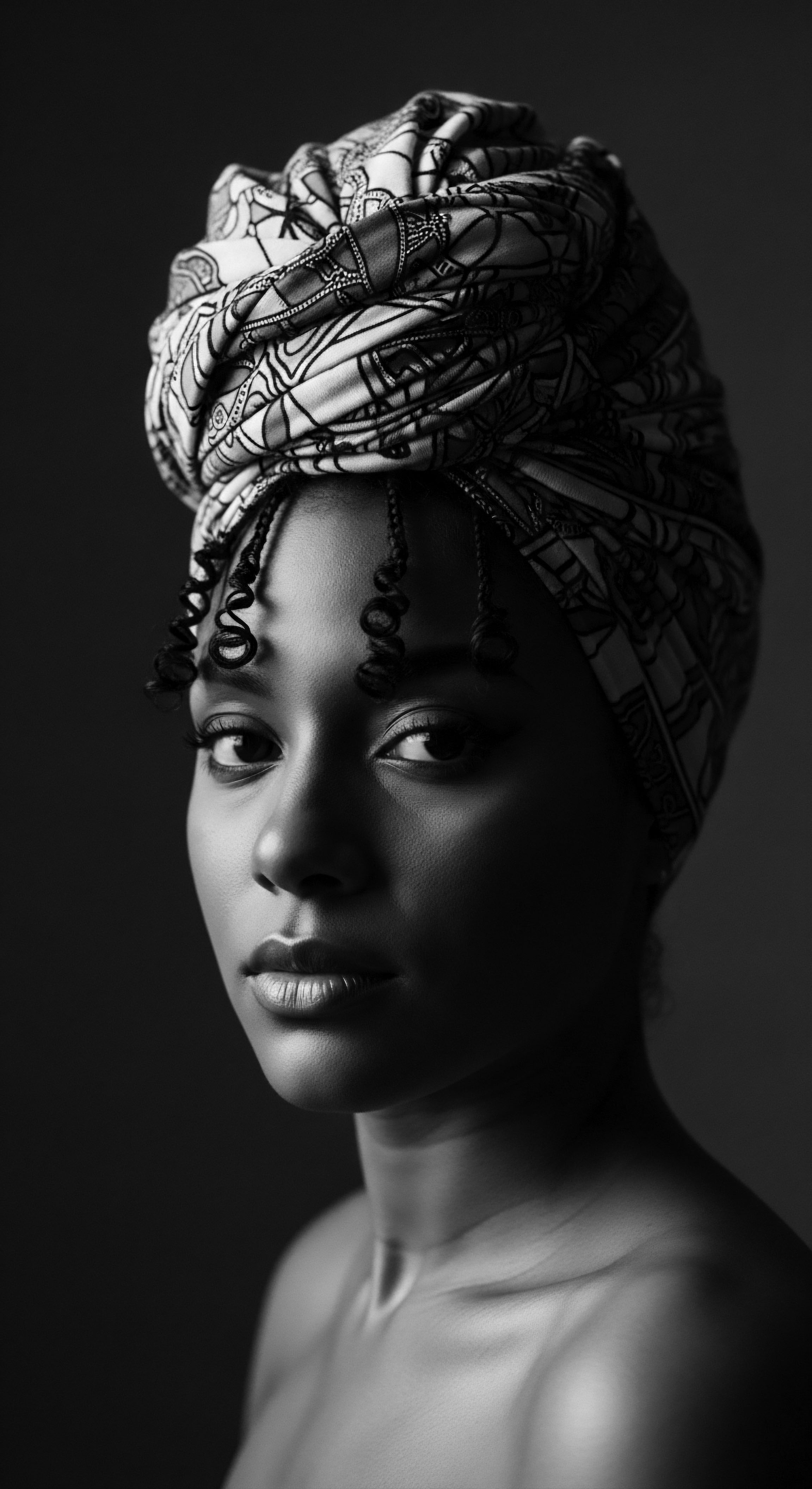
Hair Types and Shared Lineage
When considering hair type classifications, contemporary systems often categorize textured hair by curl pattern or diameter. These frameworks, while useful for modern care, sometimes overlook the historical context of their origins. Traditional societies had their own intricate ways of distinguishing hair, often linked to tribal affiliation, social rank, or life milestones. A hairstyle could signal a woman’s marital status, her age, or even her readiness for certain communal responsibilities (Byrd & Tharps, 2001).
For instance, among some West African groups, the hair of young girls not yet of marrying age might be partially shaved to deter unwelcome advances (Matjila, 2020, p. 87). These traditional distinctions speak to a nuanced understanding of hair as a personal and public statement, a living document of one’s lineage and community standing.
The concept of “good hair” versus “bad hair,” a damaging legacy of enslavement and colonial imposition, attempted to supplant these rich ancestral meanings with a Eurocentric standard (Rodriguez & Jackson, 2023). This imposed hierarchy sought to strip away the inherent dignity and beauty of coiled textures. Yet, throughout generations, the spirit of textured hair persisted, often in quiet acts of familial care and coded styles that maintained cultural ties despite oppressive forces. The reclamation of ancestral hairstyles, therefore, is not merely a trend; it is a conscious act of remembrance, a re-establishment of a connection to a past that was intentionally fragmented.
Consider the varied naming conventions for hair patterns. While today we speak of ‘4C’ or ‘3B,’ older terms, rooted in communal life, described hair by its appearance in nature, by its similarity to common objects, or by the protective styles it could hold. These were descriptors born from intimate observation and a relationship with the land and its resources. Understanding this lexicon provides insight into the worldviews that nurtured textured hair for centuries.
The unique properties of textured hair are visible in the behavior of its strand.
| Ancient Recognition Hair responds to moisture with shrinkage or expansion. |
| Modern Scientific Terminology Hygral Fatigue and Moisture Retention Characteristics. |
| Ancient Recognition Hair forms patterns naturally when unbound. |
| Modern Scientific Terminology Curl Pattern and Hair Follicle Shape. |
| Ancient Recognition Certain plants or clays clean and condition hair effectively. |
| Modern Scientific Terminology Surfactant Properties of Saponins; Chelating Agents in Earth Minerals. |
| Ancient Recognition Hair provides cushioning and warmth for the head. |
| Modern Scientific Terminology Thermal Insulation and Scalp Protection. |
| Ancient Recognition The enduring wisdom of ancestral care often mirrored scientific truths about textured hair's capabilities. |
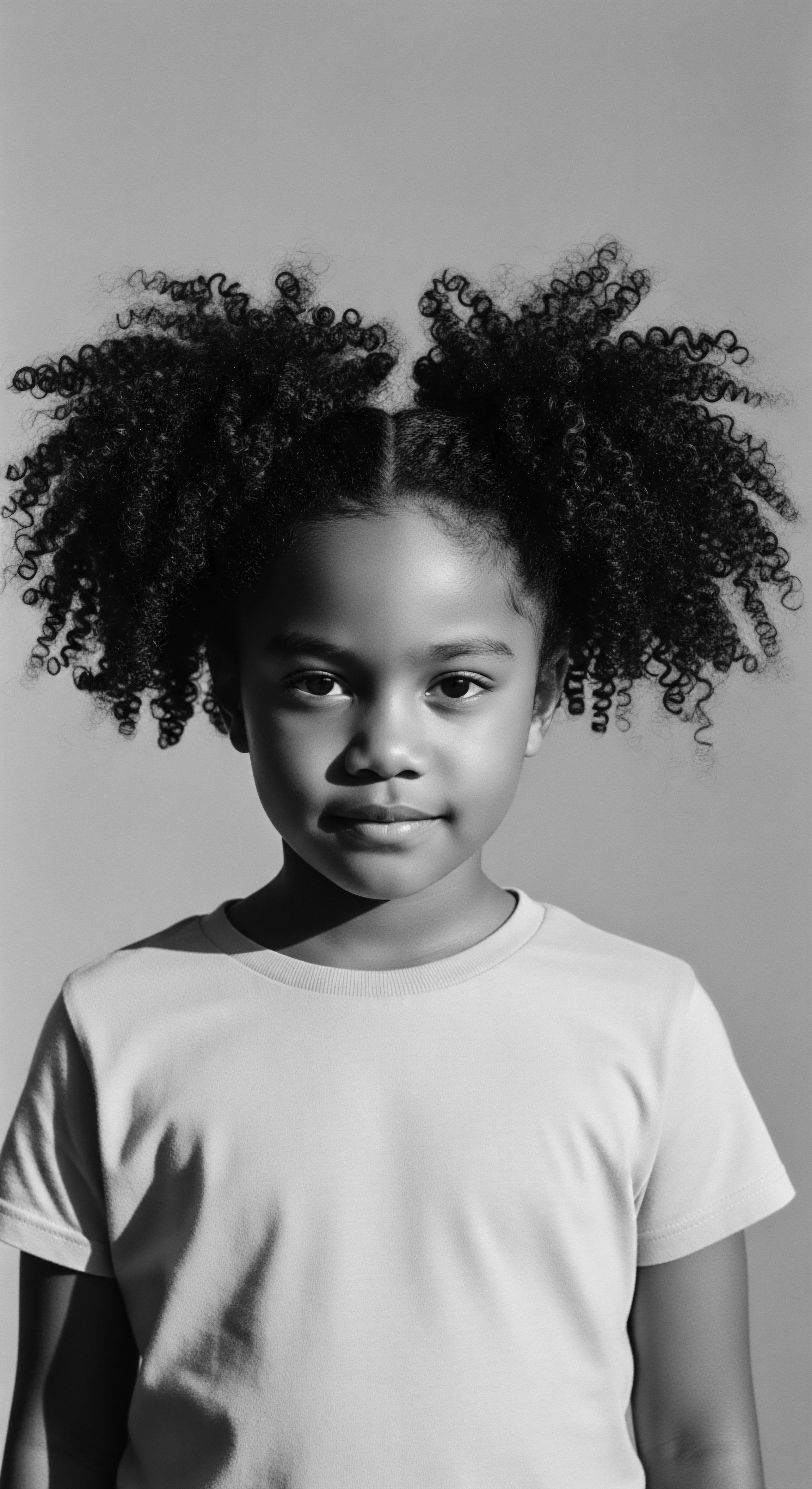
A Living Lexicon of Heritage
To truly comprehend the cultural symbol that textured hair has become, one must appreciate the language that describes it. This language extends beyond mere descriptive words, encompassing the deep historical memory embedded in each term. Consider the term ‘locs,’ often referred to by a misnomer, or ‘braids,’ which carry a genealogy stretching back to millennia. These are not merely hairstyles; they are visual dialects, speaking of communal belonging, spiritual alignment, and political defiance.
In many African societies, a person’s hairstyle communicated their identity, status, and even their occupation. This pre-colonial practice underscores a continuity of meaning that survived even the harshest ruptures of history (Dabiri, 2019).
The very act of naming a textured hair pattern or a traditional style reaffirms a connection to this long heritage. It is a way of honoring the inventiveness and adaptive spirit of those who came before us. The language we use now for hair classification might seem new, but its roots reach back to a time when hair spoke volumes without a single uttered word.
From the detailed patterns of cornrows, which in some instances are said to have contained hidden maps for escape during enslavement (Dabiri, 2019), to the majestic crowns of the Afro in the 20th century, hair has consistently been a repository of meaning. It is a living archive, where each style recounts a story, a history, a struggle, and a triumph.
How do historical perspectives shape current care practices for coiled hair?
The journey from ancestral practices to modern care is not a linear progression, but a spiral, where older wisdom often finds validation in new discovery. For instance, the traditional use of plant-based oils and butters for moisture retention, a practice generations old, aligns with contemporary scientific understanding of emollients and their role in preventing transepidermal water loss from porous textured strands. The communal aspect of hair care, where women would gather to groom each other’s hair, shared not only techniques but also stories and support.
This communal bond, while perhaps less common in its original form today, still manifests in online communities and salon spaces where shared experience and knowledge exchange thrive. The cultural practices of our ancestors provide a valuable lens through which to understand the present, grounding our rituals in a heritage of well-being and collective strength.
The journey of textured hair through history teaches us that it is more than keratin and protein; it is a repository of heritage, a witness to both hardship and glorious resilience. Its story is woven into the very fabric of identity for Black and mixed-race people, a constant, tangible link to the past, and a declaration of presence in the present. This profound bond, forged over centuries, is what elevates textured hair beyond mere physical attribute to a powerful cultural symbol, a living connection to the soul of a strand.
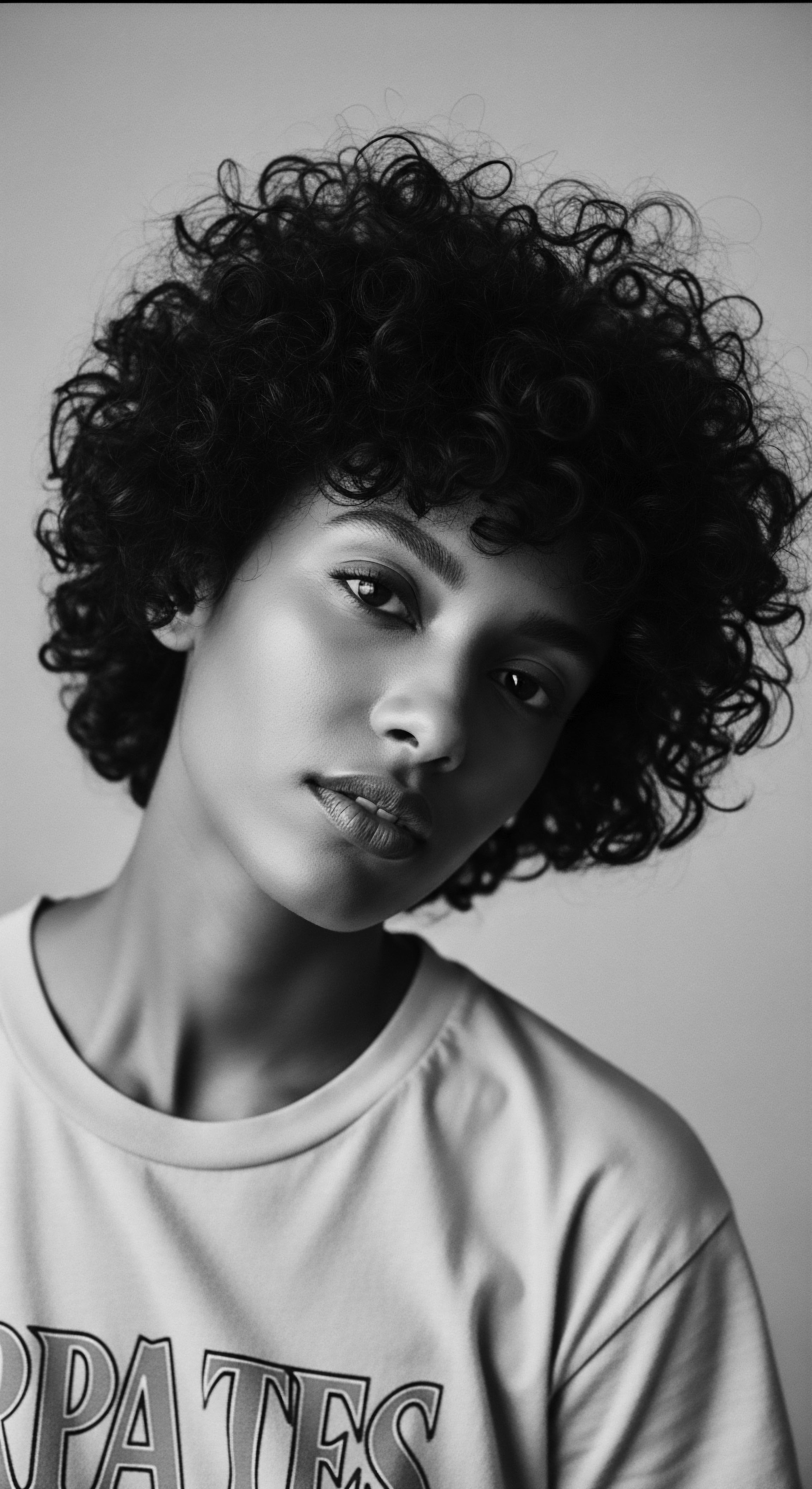
Ritual
The story of textured hair, as it moved through generations, became deeply intertwined with rituals of care, adornment, and identity formation. These acts, whether performed in a bustling village square, a quiet kitchen, or a modern salon, served a purpose far beyond simple appearance. They were moments of connection ❉ to ancestry, to community, and to self. The transformation of textured hair into a cultural symbol is inseparable from these routines, each a continuation of an ancient dialogue, a conscious honoring of what the hair represents.

Styling as Inherited Practice
From the earliest recorded histories of African civilizations, hair styling was a highly developed art form, often denoting far more than personal preference. It was a visual language. Specific braids, coils, and updos could communicate one’s age, marital status, social standing, religious beliefs, or even a particular tribal affiliation (Sieber & Herreman, 2000). The dexterity and creativity involved were extraordinary, often requiring hours of communal effort, transforming hair into intricate sculptures.
These practices were not static; they adapted over time, yet maintained their deep cultural roots. The knowledge of these techniques was passed down orally, from elder to younger, within families and communities, making each styling session a moment of intergenerational teaching and bonding.
The period of enslavement brought immense rupture to these traditions. Stripped of tools, time, and privacy, enslaved Africans found ways to preserve fragments of their hair heritage, often through clandestine braiding patterns that served as maps to freedom or as coded messages to fellow captives (Dabiri, 2019). Head wraps, initially born of harsh necessity to protect scalps from sun and lice, evolved into their own language of adornment and defiance, particularly after restrictive laws, such as the Tignon Laws in Louisiana during the late 18th century, attempted to force Black women to cover their hair (NYC.gov, 2024). Instead, these women transformed the forced covering into expressions of beauty and resistance, demonstrating an enduring creative spirit in the face of oppression (NYC.gov, 2024).
Hair styling, a practice of deep cultural importance, became a clandestine act of resistance and communication during enslavement, persisting through head wraps and hidden braid patterns.

How Did Historical Forces Redefine Hair Care and Its Perception?
The transatlantic passage and subsequent institutionalized racism profoundly distorted the perception of textured hair within the diaspora. What was once celebrated as beautiful and meaningful became demonized. The concept of “good hair” – typically straight or loosely curled hair – emerged as a tool of oppression, aiming to alienate Black people from their natural identity (Rodriguez & Jackson, 2023). This imposed standard led to widespread adoption of chemical relaxers and hot combs, tools designed to alter natural texture to conform to Eurocentric ideals.
Madam C.J. Walker, a pioneer in Black hair care, created products and a business empire addressing the needs of Black women, offering solutions for scalp health and hair growth, though many of her innovations were also linked to the pressing and straightening phenomena of the early 20th century (Walker, 1917). While her work brought economic empowerment to many Black women, it also existed within a societal context that pressured conformity.
The mid-20th century saw a powerful reawakening with the Civil Rights and Black Power movements. Here, textured hair transformed into a bold statement of liberation and racial pride. The Afro became a defiant crown, a visual rejection of oppressive beauty standards, and a declaration of “Black is beautiful” (Lashley, year unknown; Rodriguez & Jackson, 2023). This era marked a conscious shift back towards celebrating natural hair as a symbol of identity, self-acceptance, and political assertion.
It was a visible manifestation of collective identity and a powerful counter-cultural stance (Lashley, year unknown). This period reminded us that how we wear our hair is rarely a neutral act; it often carries profound social and political weight.

Tools and Techniques of Generations
The implements used in textured hair care tell a story of ingenuity and adaptation. Ancient African communities utilized materials from their environment – natural fibers, bone, wood, and sharpened tools – to create combs, picks, and styling aids. These tools were often ornately carved, reflecting the value placed on the hair they served. As diasporic communities formed, the unavailability of traditional tools led to inventive solutions, sometimes using makeshift items from their new surroundings to maintain hair health and style (Byrd & Tharps, 2001).
Consider the evolution of hair care tools:
- Traditional Combs ❉ Crafted from bone, wood, or horns, often with wide teeth suitable for detangling coils without breakage.
- Styling Sticks ❉ Used to part sections or create intricate patterns for braids and twists.
- Natural Brushes ❉ Made from plant fibers for smoothing and distributing natural oils.
- Hot Combs ❉ An invention of the early 20th century, offering a method for temporary straightening, a response to prevailing beauty standards.
- Picks ❉ Iconic of the Afro era, designed to lift and shape full, natural styles.
Each tool, whether ancient or more recent, is part of a continuing story of adapting to the unique needs of textured hair and the socio-cultural climates surrounding it. The communal practices of braiding and styling were not just about the finished look; they were about shared space, oral history, and the passing of practical skills. These gatherings created bonds, reinforced social structures, and provided a sense of continuity amidst change. The ritual of hair care, therefore, extends beyond the individual to encompass family, community, and an enduring cultural lineage.
The collective act of hair care historically forged deep communal bonds.
| Society/Region Yoruba (Nigeria) |
| Adornment/Style Specific braided patterns, often with cowrie shells. |
| Conveyed Meaning (Pre-Colonial) Spiritual connection to deities, marital status, wealth. (Rodriguez & Jackson, 2023) |
| Society/Region Fulani (West Africa) |
| Adornment/Style Cornrows at temples, braids around hairline, pearls, coins. |
| Conveyed Meaning (Pre-Colonial) Social status, age, marital eligibility. (Kodd Magazine, 2019) |
| Society/Region Mende (Sierra Leone) |
| Adornment/Style Long, thick, well-maintained hair. |
| Conveyed Meaning (Pre-Colonial) Life force, prosperity, ability to bear healthy children. (Boone in African Arts, 2000, as cited in) |
| Society/Region Mumuhuila (Angola) |
| Adornment/Style Three specific braids. |
| Conveyed Meaning (Pre-Colonial) Mourning a loss in the family. (Oxford Research Encyclopedia of African History, 2023) |
| Society/Region These examples highlight hair's profound communicative role within diverse African cultural inheritances. |
The rituals associated with textured hair care are more than mere routine; they are a living archive of a people’s history. They speak to adaptation, resistance, celebration, and an unbroken connection to ancestral wisdom. In tending to textured hair, we participate in a continuous flow of heritage, honoring the spirit of those who first understood its symbolic power and passed that understanding down through time. This continuity, from ancient communal gatherings to modern self-care practices, reaffirms textured hair as a powerful cultural symbol, a bridge connecting past, present, and future.

Relay
The journey of textured hair as a symbol, from ancient reverence to contemporary declaration, represents an ongoing relay of identity and resilience. It is a story not confined to static history books, but one actively lived and redefined across generations. The legacy of textured hair is continually passed forward, adapting to new social climates while holding fast to its deep ancestral roots. This dynamic process of transmission and reinterpretation is what grants textured hair its enduring significance in the global cultural landscape.
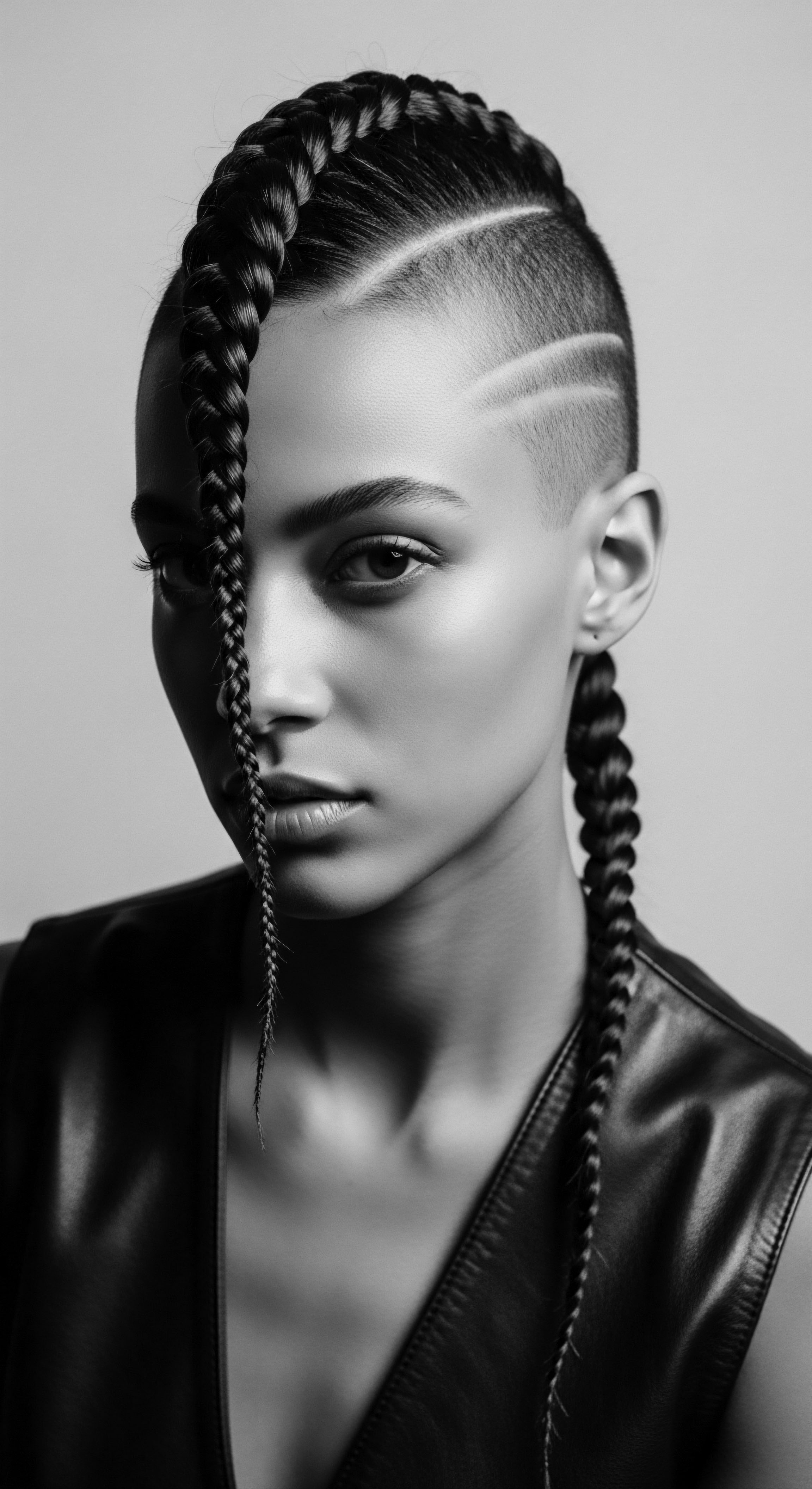
Inherited Resilience and Societal Shifts
The transformation of textured hair into a powerful cultural statement is inextricably linked to periods of profound social upheaval and reclamation. After centuries of colonial suppression and the brutal erasure of identity during enslavement, the natural hair movements of the 20th century became a tangible assertion of personhood. The rise of the Afro in the 1960s was more than a styling preference; it was a political emblem, a declaration of Black pride and a visible rejection of imposed beauty standards (Rodriguez & Jackson, 2023). This movement, rooted in the Civil Rights era, signaled a powerful shift in consciousness, challenging the pervasive notion that straight hair was the sole mark of acceptability or professionalism.
This reawakening was not without its struggles. Even as natural styles gained prominence, societal biases lingered, often manifesting as discrimination in schools and workplaces. The CROWN Act (Creating a Respectful and Open World for Natural Hair), a legislative effort originating in the United States, stands as a testament to this ongoing battle, seeking to prohibit discrimination based on hair texture or protective hairstyles historically associated with race (NYC.gov, 2024). Studies consistently show that individuals with textured hair, particularly Black women, continue to face bias.
A 2020 study by Duke University found that Black women with natural hairstyles were perceived as less professional and less likely to be recommended for job interviews compared to candidates with straight hair (NYC.gov, 2024). Such findings underscore the enduring, often subconscious, nature of these biases.
The emergence of the CROWN Act signifies an ongoing struggle against deeply rooted biases that link hair texture to perceptions of professionalism.
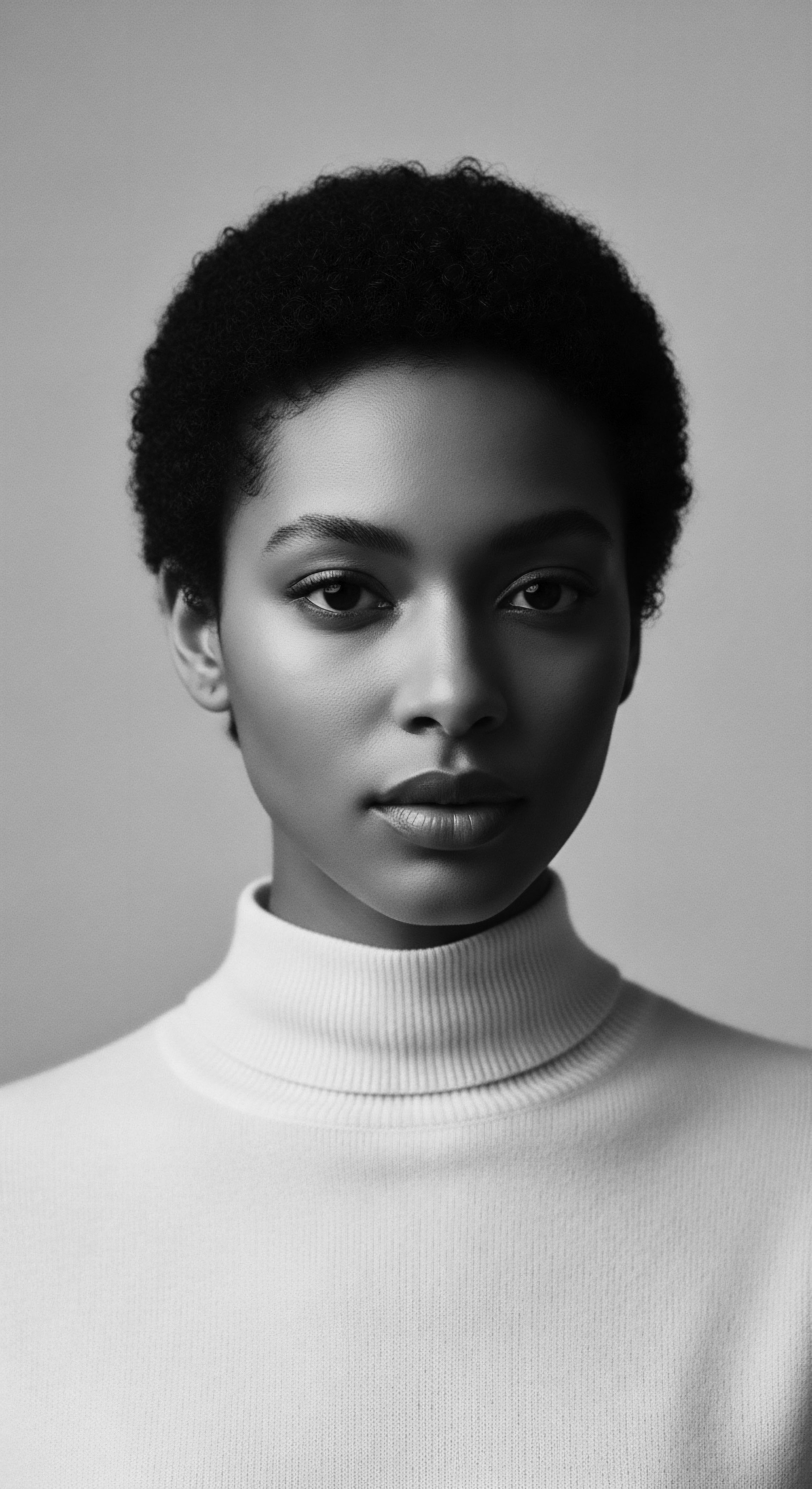
What Makes Hair a Contested Terrain of Identity?
Hair, for those with textured strands, frequently becomes a battleground of identity due to historical oppression and the imposition of Eurocentric beauty norms. Its visibility makes it an immediate marker, subject to scrutiny and judgment within spaces that demand conformity. The very act of choosing to wear one’s hair in its natural state, or in protective styles such as braids or locs, can be seen as an act of defiance against a system that historically deemed such styles unprofessional or unruly. This constant negotiation between personal expression and societal expectation renders hair a deeply personal yet overtly public statement.
It is a daily reminder of a complex heritage, one that embodies both the pain of historical dismissal and the triumph of persistent self-acceptance. The politics surrounding hair choices reflect broader societal tensions regarding race, class, and aesthetic power structures.
The psychological toll of hair discrimination is not insignificant. It contributes to feelings of anxiety and diminishes well-being, particularly for Black women (NativeMag, 2020). The pressure to conform, to alter one’s hair using potentially damaging chemical or heat treatments, can have both physical and mental health consequences (Molamodi et al. 2021).
Thus, the movement towards natural hair acceptance is also a movement towards holistic wellness, prioritizing health and authenticity over external pressures. This return to self, echoing ancestral wisdom of caring for the body as a whole, closes a historical loop, re-establishing hair as a source of strength rather than vulnerability.
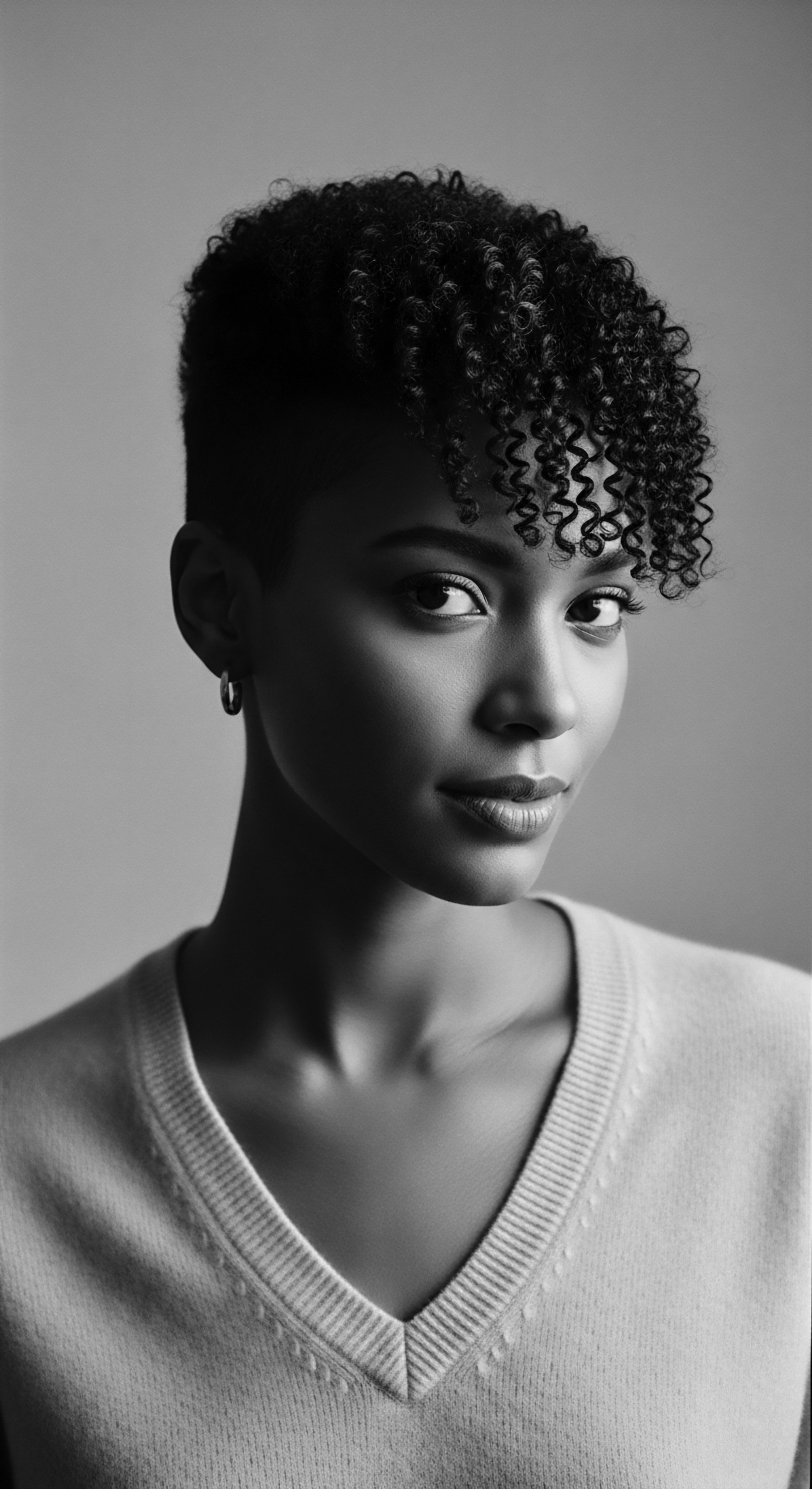
The Science of Self-Acceptance
Modern scientific understanding now offers validation for many traditional hair care practices that have been passed down through generations. For instance, the emphasis on moisture retention for coiled hair, understood intuitively by ancestors who used natural oils and butters, is now scientifically supported by studies on hair porosity and the mechanics of the hair shaft (Daniels et al. 2023). The unique helical structure of textured hair makes it more prone to dryness and breakage if not properly cared for, a reality that ancestral methods consistently addressed through various conditioning and protective techniques.
The study of hair morphology and its diverse growth patterns highlights the incredible spectrum of human biology. Researchers delve into the genetic markers that determine curl type, density, and strand thickness, revealing the biological underpinnings of hair diversity. This scientific lens, when applied with cultural sensitivity, can deepen our appreciation for the adaptive brilliance of ancestral practices. It allows for a dialogue between ancient wisdom and contemporary research, showing how what was known through observation and experience can now be explained at a molecular level.
The growing field of trichology, focused on hair and scalp health, is increasingly acknowledging the unique needs of textured hair, moving beyond Eurocentric models. This progress allows for the development of products and regimens tailored to specific curl patterns and porosity levels, building upon the foundations laid by those who cared for textured hair through centuries of limited resources. The continued scientific exploration of textured hair contributes to a global body of knowledge that celebrates diversity, reinforcing the beauty and resilience inherent in every coil and wave.
Acknowledging the historical struggles of hair acceptance transforms mere strands into symbols of enduring pride.
The concept of “Black is beautiful” in the mid-20th century, though potent, was only one step in a much longer process of collective re-evaluation. Today, the conversation expands beyond a binary of straight versus natural, recognizing the vast spectrum of textured hair within Black and mixed-race communities. It speaks to a deeper self-knowledge, a conscious decision to connect with lineage not out of obligation, but out of a genuine appreciation for the inherited beauty and strength. This nuanced understanding of hair identity, where individual choice meets ancestral legacy, defines the current moment in the relay of textured hair’s cultural significance.
The enduring status of textured hair as a cultural symbol is a testament to its living history. It has weathered oppression, adapted through ingenuity, and emerged as a powerful emblem of identity, community, and resistance. Each generation adds its chapter to this continuing story, carrying forward the wisdom of its ancestors while crafting new meanings for the future. This dynamic interplay, where the past informs the present and shapes what is yet to come, ensures that the soul of a strand remains vibrant and ever-unfolding.

Reflection
As we trace the rich lineage of textured hair, a profound truth emerges ❉ its journey through time is a mirror reflecting the deeper currents of human experience, of community, and of spirit. It is a living, breathing archive, a testament to an ancestral pulse that beats within each coil and curl. From the communal care circles of ancient Africa, where hair was sculptured into declarations of belonging and spiritual alignment, to the defiant Afros that punctuated liberation movements, textured hair has consistently stood as a visceral connection to heritage.
It has been a silent witness to both the stripping away of dignity and the fierce, unyielding reclamation of self. This is the ‘Soul of a Strand’ – not a static object, but a dynamic, evolving repository of memory, wisdom, and enduring beauty.
In our contemporary understanding, this heritage invites us to approach textured hair with reverence, recognizing the centuries of knowledge and struggle it represents. The choices we make about its care, about its presentation, become acts of acknowledgment – conscious connections to those who maintained its integrity against immense odds. The science that now elucidates its unique structure, the wellness practices that honor its specific needs, and the cultural conversations that amplify its significance all serve to reinforce this profound bond. Textured hair remains a potent symbol, reminding us that identity is deeply rooted in our physical being, inextricably linked to our collective past.
It calls us to celebrate diversity, to uphold authenticity, and to carry forward a legacy of self-worth that no external force can diminish. The story of textured hair is, ultimately, the enduring story of spirit, resilience, and belonging.

References
- Byrd, A. & Tharps, L. (2001). Hair Story ❉ Untangling the Roots of Black Hair in America. St. Martin’s Press.
- Dabiri, E. (2019). Twisted ❉ The Tangled History of Black Hair Culture. HarperCollins.
- Daniels, D. et al. (2023). Hair Care Science ❉ Understanding Diverse Hair Types. Academic Press.
- Matjila, C. R. (2020). The meaning of hair for Southern African Black women. University of the Free State.
- Molamodi, M. et al. (2021). Structural Damage to Black Women’s Hair from Styling Practices. Journal of Dermatology and Cosmetology, 12(3), 45-58.
- NYC.gov. (2024). Legal Enforcement Guidance on Race Discrimination on the Basis of Hair. New York City Commission on Human Rights.
- Rodriguez, A. & Jackson, B. (2023). What Every Dermatologist Must Know About the History of Black Hair. Journal of Drugs in Dermatology, 22(11), 1109-1112.
- Sieber, R. & Herreman, F. (2000). Hair in African Art and Culture. Museum for African Art.
- Walker, M. C. J. (1917). Text Book of the Madam C.J. Walker Schools of Beauty Culture. Madam C.J. Walker Manufacturing Company.
